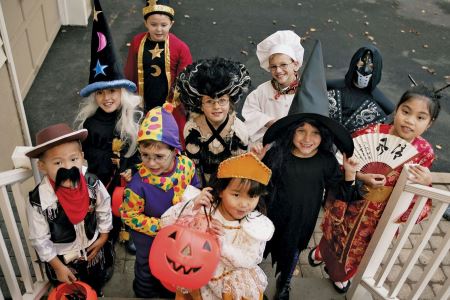This year’s Halloween allowed me a new glimpse into my children’s worlds.
I always appreciated Halloween as a time to reflect on death as part of life in our modern-day culture that doesn’t have many rituals left. The spectacle of gore and horror, however, did little to amuse or impress me, not to mention the equally horrifying nature of a ritual being saturated with consumerism and sugar. Begrudgingly we went trick or treating with our children. But this year was different.
It started out as the community walk that I always idealised from places like Spain or Italy. Children gleefully gathering together in natural formations; some fast and competitive, some slow and awestruck, the old helping the young as they all ran from house to house, weaving in between the community of trusted adults they have come to know. It was perfect. Once the small ones had more than enough grams (pounds) of sugar, parents slowly returned to what might be described as an excited power struggle over what gets to be eaten before bed. The older kids, now more closely connected in age groups; showing personality and preferences through such creative costume choices, continued on their trick or treating mission through the community, receiving acceptance, delight and enjoyment in their loaded bags and pillowcases.
Returning home, the math skills of elementary school prove indispensable as kids sort and count what my son calls a “kids currency”. Candy is the commodity and the wheeling and dealing begin. First, a promise that we don’t siphon off treats without permission. This is their hard-earned capital, and they want to do with it as they see fit. Again, I was impressed. After the sorting, occasional consuming and exclaimed delight of their diverse treasure and bounty, a pile of favorites was gathered and guarded, the “saving pile”. Next several mounds were made to share with friends who were sick and unable to trick or treat and for the preschool who collects for the food bank.
What followed was true “horse-trading” as they bartered treat for treat, accounting for differences in perceived value and quantity, the spending. When satisfied with their haul, the generosity of gift piles and the satisfaction of their work and negotiations, it appeared to me that Halloween is not just a consumer event, but a true lesson in what the real commodity is: the safety of community that collects our children and connects them to individual preferences and communal wealth.
~ Maria

